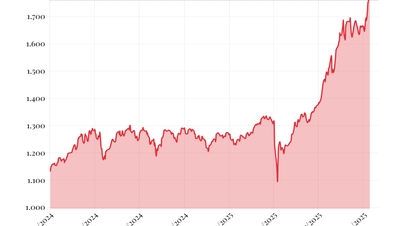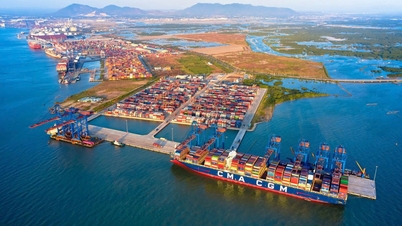
The global economy has so far withstood the biggest US tariff since the 1930s, as American consumers continue to spend, businesses shoulder higher costs and the AI-fueled investment boom continues to spread.
However, according to Bloomberg news site, President Donald Trump's latest threats to impose huge tariffs on Chinese goods have raised concerns about a new shock to the global economy, exacerbating warnings about soaring public debt and a technology stock bubble.
These concerns are expected to dominate the annual meetings of the International Monetary Fund (IMF) and World Bank (WB) in Washington this week, attended by finance ministers and central bank governors. Also on the agenda are a $20 billion US bailout to support the Argentine peso and a proposal to use frozen Russian assets to help Ukraine.
Policymakers meet amid escalating trade tensions between the world's two largest economies, along with political turmoil spreading from France to Japan.
The global economic outlook was much bleaker at the last meeting in April, when Mr Trump’s announcement of “symmetric” tariffs sent financial markets reeling, raising fears of a global recession – with trade retaliation, rising inflation and weakening investment.
But the past six months have been positive, especially in the world’s largest economy. US GDP grew at its fastest pace in nearly two years in the second quarter. Even after the announcement of new tariffs on October 9 sent markets reeling, the S&P 500 index is still up 32% from its April low.
So far, US businesses have managed to weather the tariff disruption by increasing inventories in the short term and accepting lower profit margins rather than passing the costs on to consumers.
“This recovery is encouraging, but I don’t think it’s sustainable. We’re going to see a slowdown in the global economy very soon,” said Karen Dynan, professor of economics at Harvard University and a fellow at the Peterson Institute for International Economics.
On October 10, President Trump announced that he would impose an additional 100% tax on China starting November 1, but left open the possibility of withdrawing it if Beijing backed down from threats to restrict rare earth exports.
Soaring global debt was also a major topic of discussion in Washington. According to the Institute of International Finance (IIF), global debt increased by more than $21 trillion in the first half of this year, to nearly $33 trillion – a record level comparable to the pandemic period.
The Trump administration’s efforts to support Argentina’s economy ahead of midterm elections later this month have also been closely watched. The IMF agreed to lend Argentina more money in April after internal debate. IMF Managing Director Kristalina Georgieva has been directly involved in recent negotiations with U.S. and Argentine officials.
US job growth is weakening as companies slow hiring; manufacturing has shed jobs for four straight months. In China, factory activity in September extended its decline into a sixth month, the worst since 2019. Germany’s economy contracted more than expected in the second quarter, while export-dependent carmakers continued to struggle.
“The headwinds to the global economy are growing. While it is plausible that global export volumes will not be significantly impacted by US tariffs, trade retaliation seems inevitable,” said Frederic Neumann, chief Asia economist at HSBC Holdings.
One of the big questions now is whether rising prices will start to affect consumers, with ripple effects across the globe.
“The growing pressure from tariffs could lead to a decline in US consumer and import demand,” Sheets’ team wrote in a recent report, predicting global growth will slow below 2% in the second half of the year, before recovering to 2.5% next year.
Another short-term concern is the risk of an AI bubble inversion.
“The current scenario resembles the Internet boom of 25 years ago. If a sharp correction occurs, tighter financial conditions could drag down global growth, expose vulnerabilities and hit developing countries hard,” Kristalina Georgieva warned on October 8, referring to the dot-com bubble that burst in 2000.
According to Oxford Economics' model, a tech downturn concentrated in the US could drag the world's largest economy closer to recession, while also reducing global growth to 2% by 2026, from a baseline of 2.5% - with the outlook even bleaker.
Source: https://baotintuc.vn/kinh-te/ba-qua-bom-hen-gio-de-doa-kinh-te-toan-cau-20251013113136181.htm











































































































Comment (0)